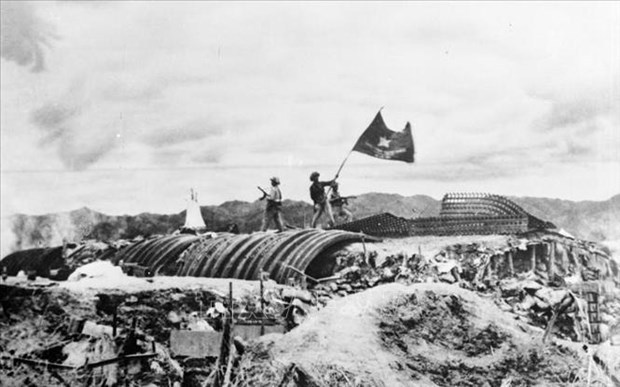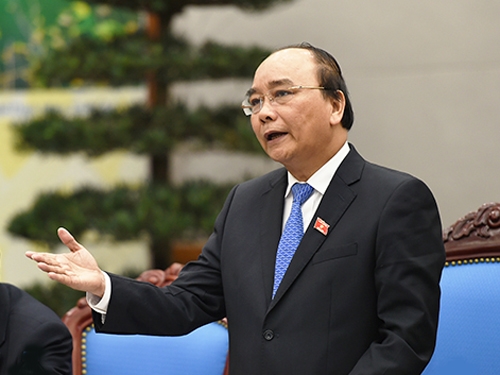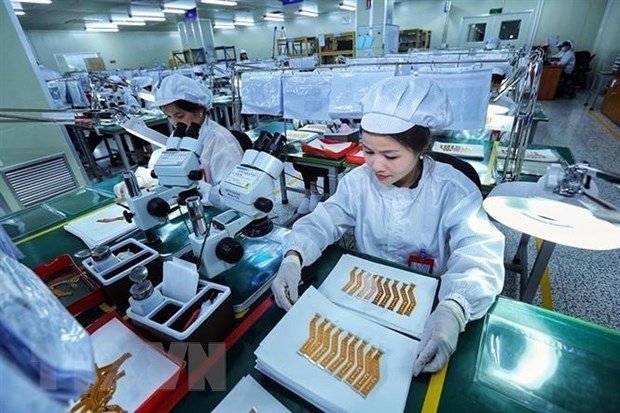 Opinion
Opinion

Prime Minister Nguyễn Xuân Phúc has been lauded by many when he asked his cabinet to be pioneers in practising thriftiness and cutting spending.
 |
| Prime Minister Nguyễn Xuân Phúc |
by Thu Vân
Earlier this week, Prime Minister Nguyễn Xuân Phúc, who has been in his post for three months, asked his cabinet to be pioneers in practising thriftiness and cutting spending. He also said as a role model, he would not get a new official car.
Although it was not something big, his announcement was welcomed by many. It was a small, tangible act after the leader introduced policies attempting to create an active and transparent Government.
Asserting that businesses are “the driving force for national economic development,” and their rights will be protected, Phúc promised that the Government would exert more efforts to boost administrative reform and seek to abolish unsuitable regulations.
His cabinet has worked on the revision and supplementation of business-related laws to remove barriers for businesses so they can operate more effectively.
To address unsafe food, in late April, the Prime Minister chaired a national conference on food safety. After the conference, he planned to issue a fresh directive to tighten State control of food hygiene.
Prime Minister Phuc also ordered the closure of about 2.2 million hectares of natural forests in Central Highlands localities in late June to tackle deforestation, as some 300,000 ha of natural forest were cleared from 2010-14.
The PM’s decision to order inspections on Núi Pháo mine in northern Thái Nguyên province this month after environmental pollution was alleged, and Mobifone’s secret acquisition of pay TV operator AVG, gave people hope that wrongdoings would be detected and addressed. They also want to see how these promises and policies turn into tangible actions.
Phúc took his seat as Việt Nam faced pressing issues such as huge public debt, a high budget deficit, a State-owned sector and banking system in urgent need of reform, and other social matters such as environmental pollution and unsafe food.
In 2015, former Prime Minister Nguyễn Tấn Dũng said that Việt Nam’s competitiveness is now the lowest among the ASEAN+6 countries. To deal with the challenges that can help Việt Nam shorten the gap with its regional peers, Phúc and his cabiet will have to act boldly.
Public debt is now the number one pressing problem for the country.
The ratio of Việt Nam’s public debt to GDP increased from 59.6 per cent in 2014 to 63.3 per cent in 2015, and the World Bank forecast the ratio would rise to 63.8, 64.4 and 64.7 per cent in 2016, 2017 and 2018, respectively.
While total budget revenue in the first six months of this year was VNĐ425 trillion (US$18 billion), budget spending hit VNĐ508 trillion (US$22.5 billion).
Vũ Thành Tự Anh, Director of Research from the Fulbright Teaching Programme in Việt Nam, said the main reason for such huge public debt is State overspending.
In 2003, budget spending was 57.4 per cent of the country’s GDP. The amount increased to 80 per cent in 2015.
Before he retired, former minister of planning and investment Bùi Quang Vinh said that managing the budget in recent years was like walking a tightrope. Experts have recommended that the Government stabilise recurrent spending and adopt tough measures to curtail spending and increase tax collection.
There wouldn’t be any spare money to waste on huge projects that won’t work, or for statues worth billions of đồng. The Prime Minister, when he was a deputy prime minister, said that only about 30 per cent of state employees meet their job requirements, why do we have to pay for the other 70 per cent? We need to trim down the number of people receiving a salary from the State budget, which now stands at 11 million!
A report in June by Minister of Finance Đinh Tiến Dũng pointed out huge wastage in the state budget. According to the report, waste was common in construction public works. For example, the Museum of Hà Nội, worth hundred of millions of dollars, has been open for nearly 5 years but has failed to attract enough visitors. The expanded Thái Nguyen Steel Plant project worth nearly $400 million is still idle almost 10 years after the project began. Dormitories for students in Hà Nội and elsewhere worth hundreds of millions of dollars have been abandoned.
As for public procurement, in 2015 state agencies bought 611 cars at a total cost of nearly $30 million.
Tighter control over public spending is essential and needs to be conducted aggressively. Transparency is not the only element needed, we need a mechanism to ensure responsibility.
While public debt is more of a problem for high-ranking officials, food safety is something people worry about daily. As the saying goes, you are what you eat.
Unsafe food has become a serious problem in Việt Nam, with food processing facilities using banned chemicals, expired frozen chicken and pork being sold to restaurants after being re-labeled and toxic chemicals found in many products.
People have almost no way of knowing if their food is safe enough to eat when labels can be faked, quality can be disguised, and most importantly, when the authority assigned to check the food cannot perform its job.
Greedy traders are blamed for selling unsafe food to consumers, but it is ineffective management and inspection that need to be blamed. How have quality goods become a luxury for domestic consumers? How come we have to stop using outdoor catering services and only purchase food from trustworthy producers?
Efforts by authorities have been futile and the situation is getting worse. This year, violations have shown no signs of decreasing but have increased rapidly.
When we can’t control greed, one thing works: management and punishment. The problem lies with how punishment-related regulations are conducted.
Just like many other Vietnamese people, I hope that the words of our new Prime Minister will be followed by strong actions so that we are not saddled with debt and can eat safe food. — VNS









